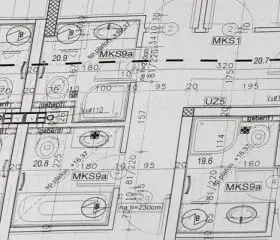/460139763-1600x400.jpg?width=300&name=460139763-1600x400.jpg)
Ultimate Guide To Incident Investigation & Procedures
The Four Key Steps of an Incident Investigation Process
An effective incident investigation process involves four key steps: incident description, identification of causes, identification of changes to the organisation and work processes, and learning.
After an unexpected event or a surprise related to safety in your organisation, it is crucial to understand what happened in as much detail as possible. The people involved in the incident know the most about the situation and should be considered your best resource. It is essential not just to look at the incident itself but also to explore everyday work related to the tasks involved comprehensively.
All incidents have multiple causes. There is no such thing as one root cause; if there were, we would have solved all safety problems by now. Identifying the variables that contributed to the circumstances that created the incident is essential. It is crucial to look deeply and non-judgmentally at the actions of all the people involved. Why did it make sense for them to make the decisions they did? Why did it make sense for them to do the work the way they did?
We then need to identify changes we want to make to how the organisation functions and how that work is done due to the incident. Recommended actions should always start with the outcome being sought and how it's different from what's currently happening in your organisation. This step is crucial as it allows validation that the identified actions will deliver the desired outcome.
Learning is sharing and institutionalising the knowledge gained and the decisions made during the incident investigation process. For understanding to occur, there needs to be a two-way open communication process between people in a way that challenges their thoughts and assumptions about work.
The Science of Human Factors and the Theory of Just Culture
The Role of Human Factors in Incident Investigations
Human factors are directly relevant to incident investigations and safety management more broadly. There are five exciting questions in human factors related to the incident investigation:
-
Was it a mechanical failure or a human error?
-
Why do safety systems fail?
-
Don't errors exist?
-
If you lose situational awareness, what replaces it?
-
Why don't they follow the procedures?
The Importance of Organisational Culture in Investigations
The most critical aspect of your organisation that will determine the value and learning you get from your incident investigation process is not your investigators' capability; it's your organisation's culture. More specifically, it’s about the extent to which you have a just culture.
Understanding What a Just Culture Really Means
A just culture is an environment where learning and accountability are fairly balanced. However, the term is often misused, misunderstood, and misrepresented. It is not about blindly punishing individuals nor about never holding anyone accountable. A true just culture lies between culpable and blameless.
Moving Beyond Blame to Systemic Understanding
The real challenge lies in understanding the complexity of events and fairly determining the level of accountability. A just culture focuses on uncovering systemic factors that contributed to incidents, rather than using mistakes as opportunities for blame.
The Critical Role of Open Communication
Open and transparent communication is key. Individuals must feel safe to report incidents without fear of retaliation, and organisations must be transparent about investigations, findings, and corrective actions.
Balancing Accountability and Learning
In a just culture, accountability is proportionate and thoughtful—not about assigning blame, but about understanding contributing factors and making changes to prevent recurrence.
Creating an Effective Incident Investigation Process
Incident investigation is a vital component of safety management but is often underutilised as a learning tool. An effective process involves:
-
Accurate incident description
-
Identification of causes
-
Organisational and work process improvements
-
Embedding learning
Both human factors science and just culture principles are crucial to making incident investigations a tool for real, lasting organisational improvement.
Enhance Workplace Safety and Learning with an Effective Incident Investigation Process and a Just Culture
Work Safety Hub recognises the importance of a thorough and efficient incident investigation process as a cornerstone of safety management in organisations. Our expert team is dedicated to helping you implement an effective incident investigation process and foster a just culture, enabling your organisation to learn from incidents and improve overall safety.
Our comprehensive approach covers:
- The Four Key Steps of an Incident Investigation Process: Incident Description, Identification of Causes, Identification of Changes, and Learning. These steps form the foundation of an effective incident investigation process, enabling your organisation to gain insights and make necessary changes in response to incidents.
- The Science of Human Factors and the Theory of Just Culture: Understanding human factors and creating a just culture are critical components of effective incident management and investigation. We help your organisation strike the right balance between learning and accountability, ensuring that individuals feel comfortable reporting incidents and accidents without fear of retaliation.
By choosing Work Safety Hub, you invest in your organisation's long-term safety and success. Our team is committed to providing the necessary guidance and expertise to develop and maintain an effective incident investigation process and a just culture in your workplace.
Want to See How We Apply These Principles Across Industries?
Explore our sector experience to see how we tailor human factors and incident investigation strategies for real-world success.Download Your Free Checklist PDF
Get instant access to our expert-designed checklist to help you. Simply fill out the form below to download your copy.SIMILAR READINGS

2 min read
2 min read
Keep your workplace safe and productive by identifying and..
Read More
5 min read
5 min read
Discover the most effective and critical steps in protecting your workplace from hazardous risks....
Read More
3 min read
3 min read
How the Australian Standards are used in court proceedings...
Read More
2 min read
2 min read
Many WH&S manuals are missing five important items from their text....
Read More